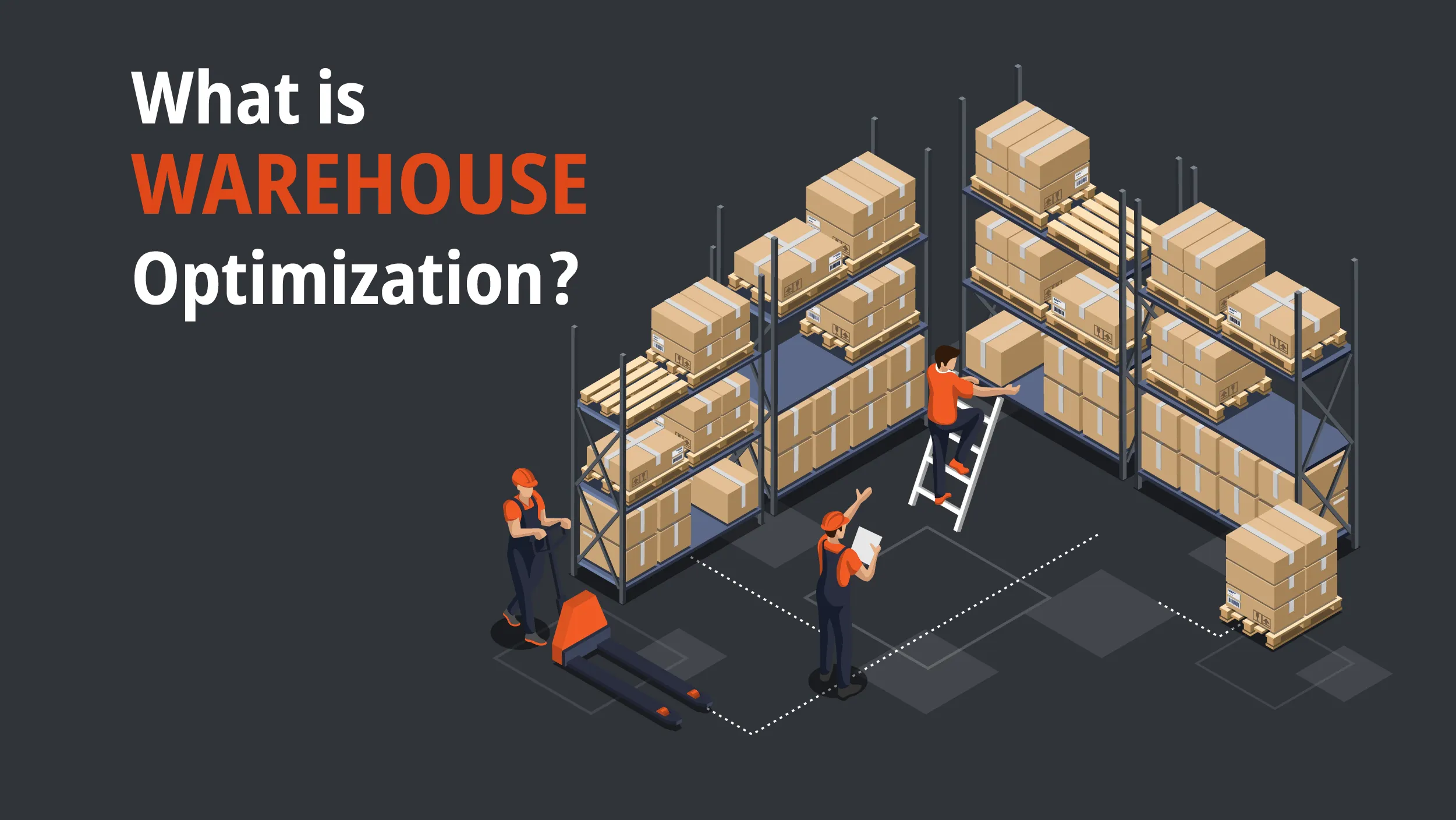Warehouse owners and operators are seeking opportunities to optimize their operations with supply chain robots and automation to streamline their operations. According to a report by McKinsey, warehouse automation is growing at approximately more than 10% each year. In this blog, let us have a look at what warehouse optimization is, its benefits, and best practices.
What is Warehouse Optimization?

Warehouse optimization is a strategic approach to streamlining and enhancing operations within a warehouse to ensure the efficiency and effectiveness of the work processes. It includes revamping work processes, integrating technology, optimizing spatial utilization, and managing the warehouse inventory precisely.
The goal of improving the warehouse processes is to minimize costs, increase speed and accuracy, and improve productivity without compromising on safety and compliance. In order to optimize warehouse operations, decision-makers have to consider a broad range of factors, including improving slotting and layout design to embed warehouse automation solutions and redesigning inventory control techniques.
The dynamics of businesses and markets are constantly changing. Hence, it has become critical for businesses to constantly analyze and improve their warehouse processes to stay competitive and satisfy consumer needs.
Following are a few various warehouse improvement aspects that business leaders need to consider:
1. Operational
While considering the operational aspects, decision-makers should evaluate the daily tasks and processes within the organization. It is critical to evaluate the order-picking processes, inventory management, shipment, receiving, and return management strategies.
2. Functional
Decision makers need to reevaluate the broader aspects of their storage units, such as the design of the layout, technologies integrated, relationships with vendors, and strategies to manage the workforce.
3. Holistic Analysis
Improving the warehouse will not be effective if only one aspect is optimized. Enterprise owners need to consider the warehouse as an integrated entity. It is essential to understand that one change can significantly have an influence on the other aspect. Hence, a holistic approach to warehouse management is crucial to ensure that the warehouse processes are cohesive and efficient.
What are The Benefits of Warehouse Optimization?

Integrating the right technologies and adapting to the best practices to improve warehouse operations will help organizations reap the following benefits:
● Strike a Perfect Work-Life Balance
Optimized warehouse management strategies will ensure the enterprise has a well-defined organizational structure. It ensures that every work resource is utilized to its fullest potential to reduce worker fatigue. This approach also ensures that the workers get paid overtime during higher workloads.
● Effective Planning and Predictions
The ability of a warehouse to plan in advance based on the predicted inventory demands helps them to plan efficiently for the future. Data collection for accurate prediction streamlines the process of allocating resources more effectively without increasing operational costs.
● More Repetitive Customers
Offering exceptional customer service is one of the factors that define whether the customer would return or not. In terms of warehouse operations, clients would expect timely delivery to give repeat business. Improving the operations at a warehouse would ensure that products that are high in demand are always in stock to ensure on-time delivery.
Best Warehouse Optimization Practices
A perfect balance between technology integration and streamlined work processes along with effective training are a few key factors in warehouse optimization practices. Here are a few practices to consider if you want to improve your warehouse operations:
1. Evaluate and Understand The Existing Warehouse
It will be challenging for the warehouse operators or owners to fix the problems if they are not aware of them. The first step to optimize the work processes at a warehouse is to conduct a detailed analysis of the existing warehouse setup. Warehouse operations managers should consider their existing staffing levels and technologies integrated. Following are a few questions that will give you an overview:
- Is the warehouse layout too cluttered, which creates challenges for the workers to maneuver?
- Is there enough space in the warehouse that stays vacant and gathers nothing but dust?
- Does it impact the accuracy of the warehouse operations when there is a substantial increase in the order volume?
The responses to these questions will give you an overview of the current state of the operations and what factors need to be improved. It is an effective way to determine the workforce optimization opportunities to efficiently organize the warehouse.
2. Identify the Business Goals and Bottlenecks in Achieving Them
After a thorough evaluation of the existing operations, it is critical to understand the objectives of the business. Below are a few questions that will assist you in this process:
- Does your warehouse aim to minimize the shipment times to enhance customer satisfaction?
- Is reducing operating costs to increase profits the goal?
- Is improving order picking and processing accuracy to minimize returns and related costs a priority to the organization?
- Is your organization looking to enhance space utilization to meet the increasing consumer demand?
Identifying the goals and priorities will provide insights into the direction and purpose to have an efficient warehouse optimization strategy.
3. Integrate The Best Warehouse Management System
Efficient inventory management plays an important role in offering a smooth supply chain right from procurement to delivery. The best warehouse management system will offer a holistic view of the entire supply chain. It serves as a single source of truth, so the workers do not have to access various systems to get the required information. Adapting to the best practices to manage inventory will assist in improving the cash flow and the overall operations of the warehouse.
4.Consider Adopting Lean Warehousing Strategies
Implementing lean management practices assists in minimizing the time spent on tasks that do not add value to the organization. Lean management strategies are about doing more with less effort.
5. Train The Warehouse Staff
The operations of any warehouse will be as efficient as its least-trained resource. If the workforce is not given adequate training, they will lack the ability to perform better. It is important to train new employees and conduct regular training sessions to evaluate the efficacy of employees.
Wrapping Up Warehouse Optimization
Optimizing warehouse operations includes various aspects that need a strategic and holistic strategy. Warehouse operators and owners need to address key aspects like layout design, warehouse automation solutions, inventory management strategies, and workforce optimization. Businesses that have the best approach to warehouse optimization will witness significant enhancements in efficiency, productivity, and customer service.




